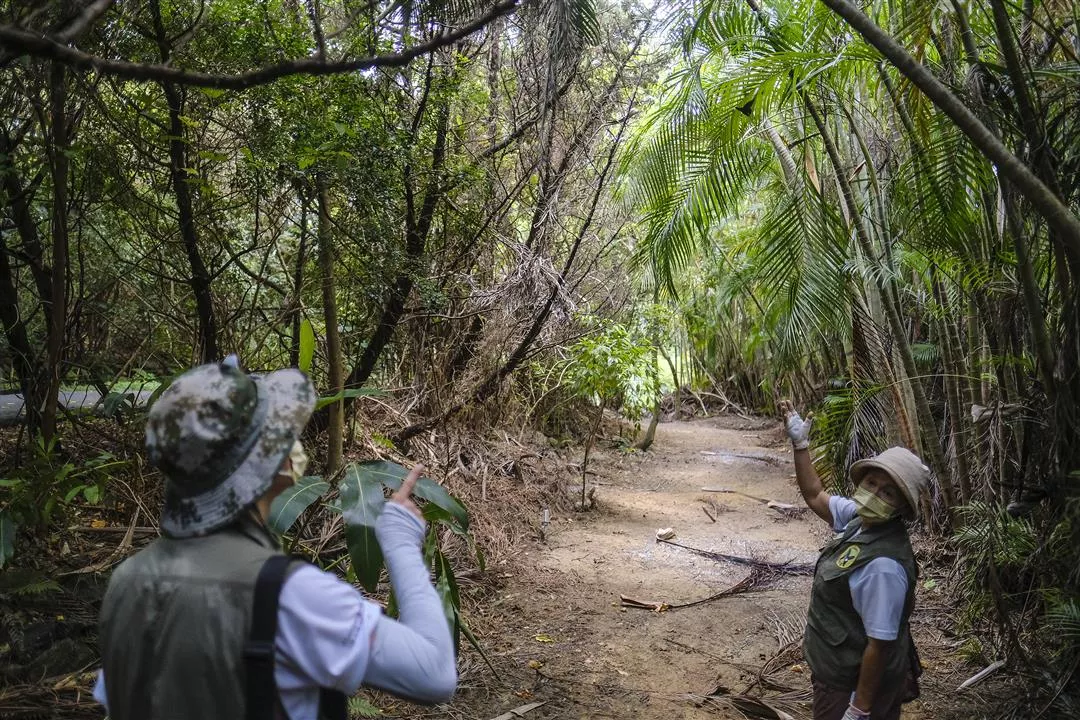Jiannan Butterfly Park
In 2003 the Butterfly Conservation Society of Taiwan began undertaking habitat restoration along the Jiannan Butterfly Trail in Taipei’s Shilin District. The trail had been ravaged by a typhoon, but after cleanup and planting work by volunteers, more than 160 butterfly species can now be found in the Jiannan Butterfly Eco-Education Park.
On the day of our visit, BCST chairman Chang Jung-hua leads us through this open-plan butterfly park right in the city. BCST volunteers have planted native host and nectar plants for consumption by caterpillars and adult butterflies. To avoid competition over food, they have also specially arranged the distribution of plants in the park. Whenever a new food plant species is added, volunteers record the number of butterflies feeding or taking up residence, to assess how attractive the plant is to butterflies.
Interesting aspects of butterflies’ natural history can often be observed in the park. For example, on a Formosan wendlandia tree (Wendlandia formosana) near the entrance, caterpillars of the staff sergeant (Athyma selenophora laela) use their silk to string together fecal pellets into “frass chains” and barriers to protect themselves from predators. Meanwhile, a chocolate albatross (Appias lyncida eleonora) flutters about a spider tree (Crateva adansonii ssp. formosensis) looking for a suitable place to lay its eggs.
In the park, butterflies continually flit past. There is the lemon swallowtail (Papilio demoleus), which seems to disappear before your very eyes, as well as the common emigrant (Catopsilia pomona), which is likewise found at low elevations and is the star attraction at Yellow Butterfly Valley in Kaohsiung’s Meinong District. Looking up, we see a white-banded leopard (Timelaea albescens formosana), with its leopard-skin pattern, resting on a branch.
“One Australian girl who visited the park told us that Taiwanese are lucky to able to see so many kinds of butterflies in one place,” recalls Chang Jung-hua. In fact, though Australia is 215 times as large as Taiwan, they each have about the same number of butterfly species.
The BCST also uses the park to teach citizens about butterfly ecology. For example, in the canopy observation area, people can look down into the treetops to see butterflies drinking nectar. Also, near the rest area, Chang explains, “There is our treasure—a headache tree [Premna serratifolia]. This is a shrub that attracts many butterflies and, thanks to its upturned flower clusters, makes it easy for visitors to observe and photograph them.”

The Butterfly Conservation Society of Taiwan laid out this path to give shade-loving butterflies a place to stay out of the sun.